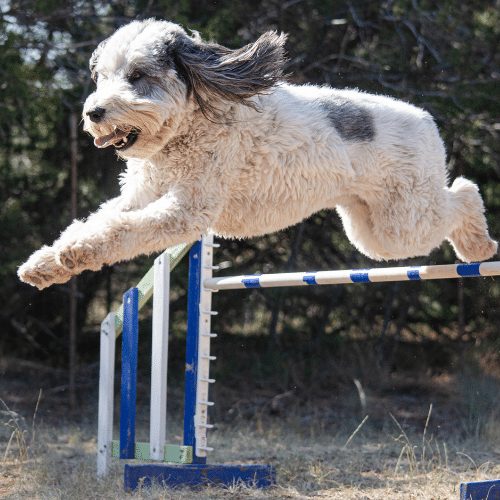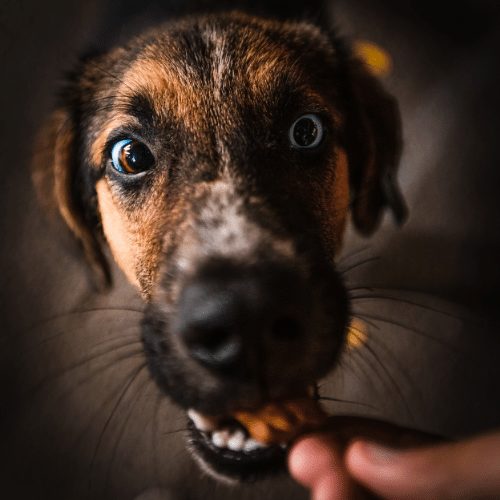Is dog agility cruel?
March 24, 2021 2021-04-15 17:39Did you see dog agility on TV and wonder about this new sport? Do you ponder trying it out with your own dog, but want to make sure it will not hurt or harm him? Is dog agility cruel or beneficial?
The quick answer is that no – dog agility is not cruel at all. Of course, training should only be done with positive reinforcement and the dog’s natural ability and athleticism needs to be considered at every step of the training process. If agility training becomes too stressful for a dog, he can in fact “burn out”.
Let’s look in detail at whether dog agility could be cruel to a dog, and how to make this a fun and enjoyable sport for you pup!
Table of Contents

Is agility bad for dogs?
Generally speaking no – agility is not bad for dogs. Of course, in order to make dog agility good for dogs, owners should follow a slow and thoughtful progression and never push their dogs too much in training.
When can agility become cruel for dogs?
Some owners become very focused on taking their dogs to competitions, entering them in different trials and even qualifying for national events. This can quickly get to a point where the dog is not enjoying the training anymore.
Intense daily training can put him under both physical and emotional stress. If the owner starts to use punitive training methods, agility can become uncomfortable, and, eventually, cruel.
Agility could also be aversive for dogs with existing health conditions that make it impossible for them to navigate a course without discomfort or pain. If your dog has arthritis, is in his senior years, has any kind of vision problem or a muscular-skeletal issue, agility is not the right sport for him.
Agility training methods
Because agility is a sport that is scored based on speed and accuracy, most trainers have realized that there is no point in using negative training methods. In order to have the dog run as fast as they can, the owner needs to be motivating and encouraging – this is not possible when punishing the dog.

Positive reinforcement
Ideally you should use positive reinforcement when training your agility dog. Nearly all owners who start out in dog agility actually reward their dog way too rarely!
In our agility online class, we begin by rewarding the dog for every single jump at first. This way, the dog rapidly learns how much value lies in navigating the obstacles and quickly begins to make an effort to take them.
The rewards most commonly used in agility are treats and toys. Verbal praise alone does not motivate most dogs enough. Especially if you have a strong-willed dog who might sometimes have a mind of his own, it is crucial to use a high-value reward that encourages him to work together with you. Just saying “good boy!” usually doesn’t cut it – instead use enticing treats or his favorite ball or tug toy.
Punitive training methods
Unfortunately, some facilities still encourage the use of punitive training methods in agility. Owners may lift their dogs up by the collar for making mistakes or swatting them on the nose. If you train agility like this, then yes – it will be cruel for your dog. Any training situation in which an owner resorts to physical or verbal punishment will be perceived very negatively to the dog.
If the training facility you seek out uses these types of training methods, you should look for an alternative place to train that offers positive and kind agility training.
Finding a healthy agility and life balance
It is important that your dog has a life outside agility. Some competitors become very set on earning certain titles or scores and may neglect to offer their dog plenty of enrichment, exercise and socialization outside of an agility setting.
Agility can become cruel if it is the only thing your dog does. Strive for a healthy balance between agility training and life.
There is no harm in training your dog for 15 minutes 5 days a week. However, you should still interact with your dog away from the agility field. Provide plenty of enrichment and mental stimulation as well as cross training for him.
Take him on walks or let him play with other dogs if he enjoys this. Teach him a new (non-agility-related) trick or let him solve a brain game. Provide plenty of chew items for him and offer his food in a variety of enriching ways.
Always remember that agility should never be a dog’s entire life, but only a part of it!


Putting your agility dog’s best interests first
You should never put your own competitive interests above your dog’s wellbeing. Consider how he feels about agility: Does he enjoy it? Is he having fun during the training? Is his body up to the athletic challenges that come with this sport?
This also means knowing when it is time to retire your dog. Dogs should jump lower jump heights once they reach about 10 years of age, and should stop all high-impact activities a few years later.
Ask yourself frequently how your dog is doing with the sport, and whether it is a good activity for him that makes him happy!
The Bottom Line
Agility is not cruel for dogs if it is done correctly. Owners should take great care to only do agility with dogs that are physically sound and in good shape. Young puppies and senior dogs should not be encouraged to navigate high jumps.
Owners need to find a healthy balance between agility training, their competitive aspirations and daily life with their dog. Agility can become cruel if it is all that a dog gets to do. Dogs will still need other interactions and activities with their owners beyond agility training.
Punitive training methods should not be used in agility (or any other dog sport). They will scare and intimidate the dog and make training not enjoyable for him. Your dog should never fear you or be stressed during training.
If your trainer encourages you to use cruel training methods, look elsewhere for better training options.


